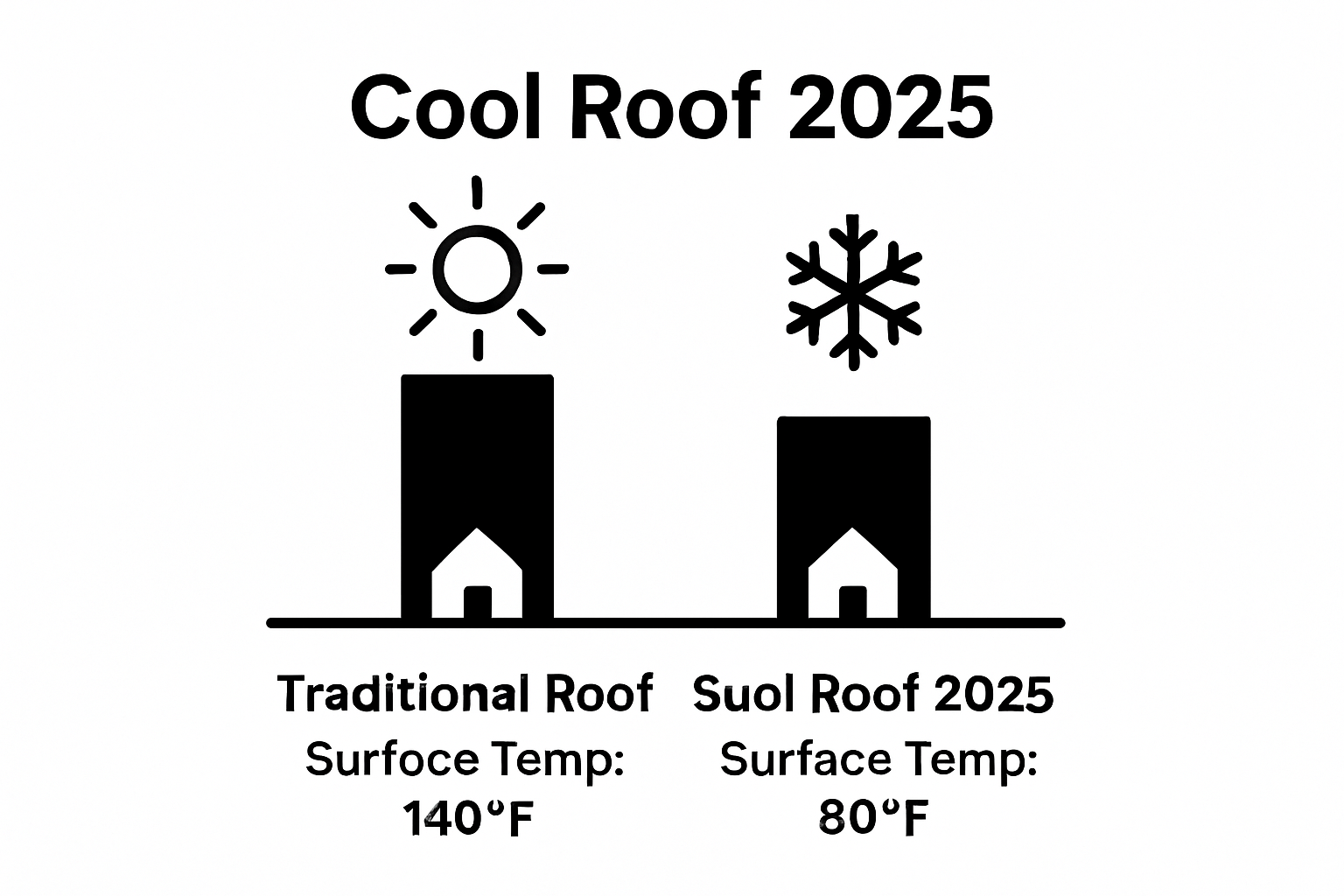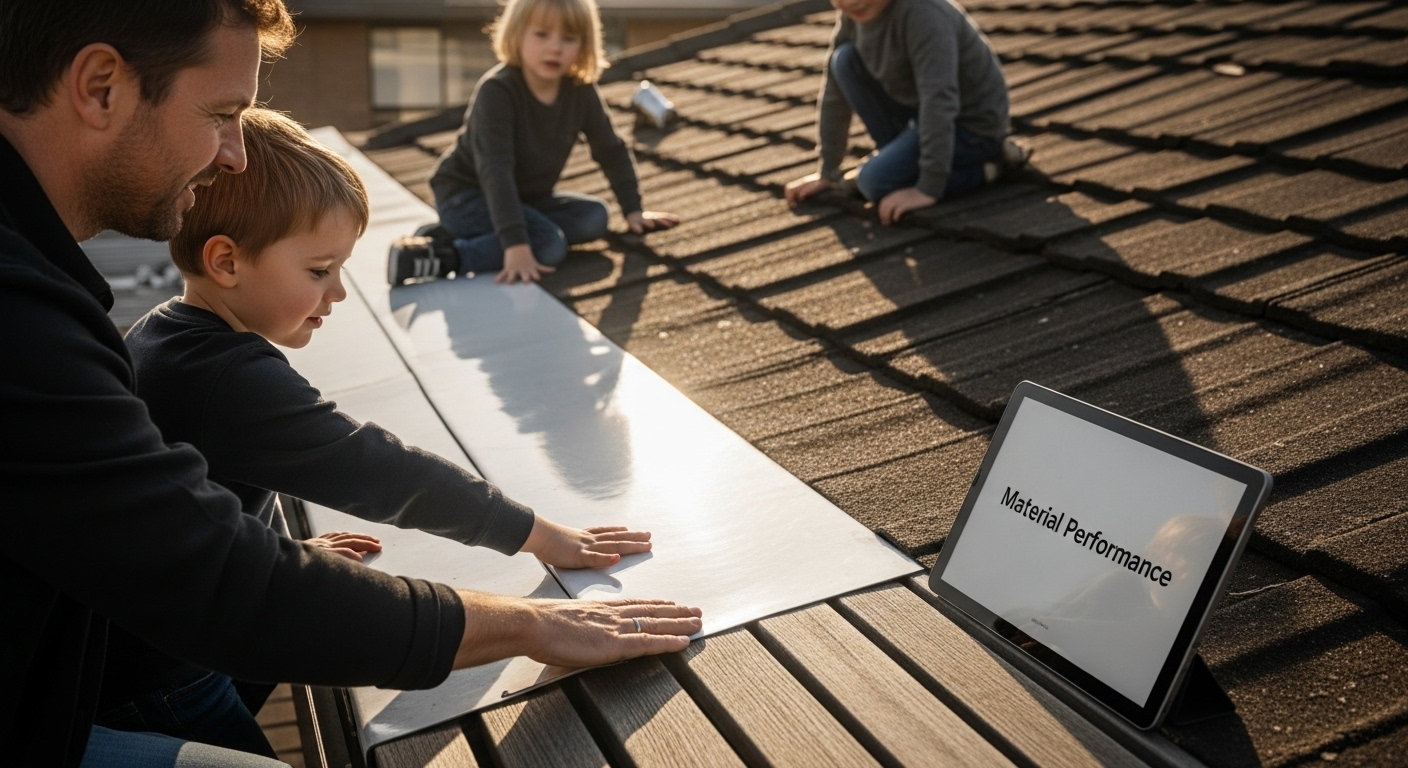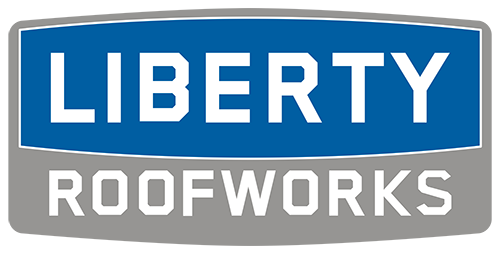Cool roofing standards are changing what homeowners expect from their roofs. Most people are surprised to learn that some cool roofing materials can reflect up to 80 percent of sunlight away from a building. The twist is that the biggest impact is not just about keeping your attic cool, but about how these standards can cut your utility bills and push cities to develop cleaner, smarter neighborhoods.
Table of Contents
- What Are Cool Roofing Standards?
- Why Cool Roofing Matters For Energy Savings
- How Cool Roofing Works To Reduce Heat
- Key Features of Cool Roofing Materials
- Understanding Code Regulations and Compliance
Quick Summary
| Takeaway | Explanation |
|---|---|
| Cool roofs improve energy efficiency. | By reflecting sunlight and emitting heat, cool roofs reduce building heat absorption, leading to lower energy use. |
| Homeowners can save on cooling costs. | Implementing cool roofing can reduce cooling expenditures, saving $0.64 to $1.11 per square foot over the roof’s lifetime. |
| Cool roofing standards are evolving. | Stricter standards by 2025 will require manufacturers to develop more advanced materials for enhanced performance. |
| Compliance with regulations is essential. | Homeowners and contractors must understand and meet current and changing building codes affecting cool roofing materials. |
| Choose reflective materials for best results. | Utilizing materials like reflective coatings and light-colored shingles maximizes solar reflectance and thermal savings. |
What Are Cool Roofing Standards?
Cool roofing standards represent a critical evolution in building technology designed to improve energy efficiency and environmental sustainability. Exploring roofing trends in Charlotte reveals how these standards are transforming residential and commercial construction.
Understanding Cool Roof Technology
Cool roofing standards define specific performance metrics for roofing materials that maximize solar reflectance and thermal emittance. According to the U.S. Department of Energy, these standards require roofing surfaces to reflect more sunlight and absorb less heat compared to traditional roofing materials.
Key characteristics of cool roofing standards include:
- Higher solar reflectance (ability to reflect incoming sunlight)
- Enhanced thermal emittance (capacity to release absorbed heat)
- Minimum performance thresholds for energy efficiency
Performance and Environmental Impact
The primary goal of cool roofing standards is to reduce building heat absorption, which provides multiple benefits:
- Decreased indoor temperature during summer months
- Reduced energy consumption for cooling systems
- Lower utility costs for homeowners
- Minimized urban heat island effect
- Decreased carbon footprint
By 2025, these standards will become increasingly stringent, pushing manufacturers to develop more advanced roofing materials that meet rigorous energy performance criteria. Homeowners can expect roofing solutions that not only protect their homes but also contribute to broader environmental sustainability efforts.
Below is a summary table that compares the key features and benefits of cool roofing standards and traditional roofing standards for homeowner energy efficiency and sustainability.
| Feature/Benefit | Cool Roofing Standards (2025) | Traditional Roofing Standards |
|---|---|---|
| Solar Reflectance | High (up to 80% sunlight reflected) | Low (absorbs more sunlight) |
| Thermal Emittance | Enhanced | Lower |
| Energy Savings | Significant; reduces cooling costs | Limited |
| Environmental Impact | Reduces urban heat island effect | Contributes to higher heat absorption |
| Compliance Requirements | Stricter, evolving in 2025 | Less stringent, slower to evolve |
| Roof Surface Temperature | Lower | Higher |
| Lifespan of Roofing Materials | Extended | Standard |
| Material Types | Reflective coatings, advanced systems | Standard shingles, tiles, membranes |
Why Cool Roofing Matters for Energy Savings
Energy savings represent a critical motivator for homeowners considering cool roofing technologies. Our solar air conditioning guide provides additional context on integrating energy efficient solutions.
Understanding Energy Cost Reduction
Cool roofing technologies directly impact household energy consumption by minimizing heat absorption. According to the Federal Energy Management Program, cool roofs can reduce surface temperatures by up to 606F compared to traditional dark roofing materials, translating into substantial energy savings.

Key financial benefits include:
- Potential savings of $0.64 to $1.11 per square foot over roof lifetime
- Reduced cooling system workload
- Lower monthly utility expenditures
Environmental and Performance Advantages
Beyond financial considerations, cool roofing delivers comprehensive environmental benefits. By reflecting more sunlight and absorbing less heat, these advanced roofing systems contribute to:
- Decreased household carbon footprint
- Reduced urban heat island effect
- Improved overall building energy efficiency
- Extended roof material lifespan
- Enhanced indoor comfort during summer months
Homeowners investing in cool roofing technologies can expect measurable improvements in both environmental sustainability and long term energy cost management. As standards evolve, these roofing solutions will become increasingly sophisticated, offering even greater performance and efficiency.
How Cool Roofing Works to Reduce Heat
Understanding the scientific principles behind cool roofing is crucial for homeowners seeking energy efficient solutions. Learn about proper home ventilation to complement your cool roofing strategy.
The Science of Solar Reflectance
Cool roofing operates on two fundamental principles: solar reflectance and thermal emittance. According to the U.S. Environmental Protection Agency, these technologies strategically manage how roofing materials interact with solar radiation.
Key mechanisms of heat reduction include:
- Reflecting up to 80% of incoming sunlight
- Emitting absorbed heat more efficiently
- Preventing heat transfer into building interiors
Thermal Performance Dynamics
The thermal performance of cool roofing materials directly impacts indoor temperature regulation. By utilizing specialized pigments and surface treatments, these roofing systems can:
- Maintain lower surface temperatures
- Reduce indoor heat gain
- Minimize cooling system stress
- Create a more comfortable living environment
Cool roofing technologies transform traditional roofing from a heat absorption surface to an intelligent thermal management system. The advanced materials actively work to minimize heat transfer, providing homeowners with a proactive approach to managing indoor temperatures and energy consumption.
Key Features of Cool Roofing Materials
Cool roofing materials represent a sophisticated approach to building energy management. Explore our comprehensive metal roofing guide to understand innovative roofing technologies.
Solar Reflectance and Material Composition
According to the U.S. Department of Energy, cool roofing materials are engineered with specific properties to minimize heat absorption. These advanced materials distinguish themselves through two critical performance metrics:
- Solar Reflectance Index (SRI): A comprehensive measure of a roof’s ability to reject solar heat
- Specialized surface treatments that enhance thermal performance
- Engineered pigments designed for maximum solar reflection
Material Types and Performance Characteristics
Cool roofing technologies encompass diverse material options, each offering unique thermal management capabilities:
- White or light colored reflective paint coatings
- Specialized reflective shingles and tiles
- Advanced sheet membrane coverings
- Metallic surfaces with high reflective properties
These materials are strategically designed to transform traditional roofing from passive heat absorbers into active thermal management systems. By prioritizing solar reflectance and thermal emittance, cool roofing materials provide homeowners with an intelligent solution for reducing energy consumption and maintaining comfortable indoor environments.
This table provides a concise overview of the major types of cool roofing materials discussed in the article, along with their distinguishing characteristics and performance traits.
| Material Type | Key Characteristics | Performance Highlights |
|---|---|---|
| Reflective Paint Coatings | Light-colored surface, high SRI | Maximizes sunlight reflection |
| Specialized Shingles & Tiles | Engineered pigments, lighter colors | Enhanced solar reflectance |
| Advanced Sheet Membranes | Synthetic or polymer-based, reflective | Superior heat management |
| Metallic Surfaces | Metal, often coated, with high reflectivity | High solar and thermal performance |

Understanding Code Regulations and Compliance
Navigating the complex landscape of cool roofing regulations requires homeowners to understand evolving building standards. Our comprehensive metal roofing guide provides additional insights into roofing technology compliance.
Emerging Regulatory Frameworks
According to the Cool Roof Rating Council, the ANSI/CRRC S100-2025 standard represents a significant milestone in cool roofing regulations. This comprehensive framework establishes critical benchmarks for roofing materials:
- Comprehensive testing protocols for exterior wall materials
- New provisions for polymer and composite roofing systems
- Standardized measurement of solar reflectance and thermal emittance
Performance and Compliance Standards
Regulatory compliance for cool roofing materials involves meeting specific performance criteria that vary by region and building type. Key compliance considerations include:
- Solar Reflectance Index (SRI) thresholds
- Three-year aged performance requirements
- Mandatory ratings from authorized certification bodies
- Regional variations in thermal efficiency standards
Homeowners and contractors must stay informed about these evolving regulations to ensure their roofing solutions meet current building codes and energy efficiency standards. As environmental considerations become increasingly important, cool roofing compliance will continue to play a crucial role in sustainable construction practices.
Ready to Upgrade to a High-Performing Cool Roof?
Worried about rising cooling costs, unpredictable temperatures, or new roofing regulations? As explained in this article, meeting the Cool Roofing Standards 2025 can feel overwhelming, especially when you just want your home to stay comfortable and energy efficient. If you are frustrated by higher energy bills and concerned about staying compliant with new efficiency codes, you are not alone. Many Charlotte homeowners want peace of mind knowing their roofs are prepared for both today’s weather and tomorrow’s regulations. At Liberty Roofworks, we translate the latest cool roofing technology—like high solar reflectance and improved thermal emittance—into hassle-free solutions for your home. We are committed to turning industry standards into real, measurable savings and comfort for you.
Now is the perfect time to take action. Talk to our experts for a personal assessment and discover which energy-efficient roofing option fits your needs. Visit our main website to schedule a consultation and see why Charlotte homeowners trust us for roof repairs and replacements. Do not wait until the next utility bill arrives. Make your move toward a cooler, smarter home today.
Frequently Asked Questions
What are cool roofing standards?
Cool roofing standards define performance metrics for roofing materials that maximize solar reflectance and thermal emittance, reducing heat absorption and improving energy efficiency.
How do cool roofs help reduce energy costs?
Cool roofs minimize heat absorption, which can decrease indoor temperatures and reduce the workload on cooling systems, leading to lower utility bills for homeowners.
What materials are used in cool roofing?
Cool roofing materials include reflective paint coatings, specialized shingles and tiles, advanced sheet membranes, and metallic surfaces designed to enhance solar reflectance and thermal performance.
How do I ensure my roofing meets cool roofing regulations?
To ensure compliance with cool roofing regulations, homeowners should be familiar with the Solar Reflectance Index (SRI) thresholds, performance requirements, and necessary certifications from authorized bodies.
Recommended
- Understanding Roofing Trends in Charlotte: Insights for Homeowners – Liberty Roofworks
- How Proper Ventilation Helps Cool My Home | Charlotte Roofing Company
- 7 Key Types of Roofing Systems Every Homeowner Should Know – Liberty Roofworks
- Understanding Roof Lifespan Factors for Homeowners – Liberty Roofworks
